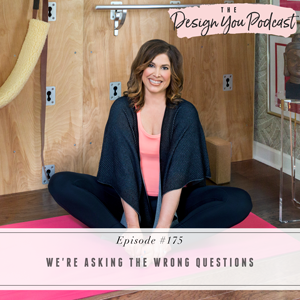
There are three questions that I hear interior designers asking over and over again, whether it’s in my programs, on live calls, or social media. Each of these questions and the narratives I hear around them are keeping people stuck and procrastinating in their businesses and this week, I’m sharing what they are.
If you ask the right questions, you get the right answers, but so many people are still asking questions that are holding them back in their businesses. There is another question to ask yourself that will help you stop positioning yourself as a victim and start making huge amounts of progress in your business.
Join me this week as I’m sharing three questions that could be keeping you stuck and how to change the stories you’re telling yourself surrounding them. Discover why asking the wrong questions will never lead you to the results you want, and the one question you should be asking instead to create the business you want and deserve.
I have something great happening TODAY and it is completely free! If you have an interior design business question or want to receive some live coaching, be sure to register for my free Q&A taking place this afternoon! Check out my Instagram for details on how to sign up.
If you want help creating a business with thriving revenue streams so that you can design the life you really want this year, now is your chance! We’re going to be opening the doors to the Design You Coaching Program in just a few weeks, and with this round, we are launching a whole new course where I share my complete design system with you. You’ll receive every template, tool, SOP, worksheet, downloadable, video, and more that I have created and used myself, and receive a complete step-by-step for how to run your full-service projects. You do not want to miss this, get on our waitlist now!
If you’ve loved these last two weeks and you want even more from me, you have to come to my masterclass on August 12th. This masterclass is about the 3 key lies we keep telling ourselves and the one solution to fix them. Click here to register now, I can’t wait to see you there!












